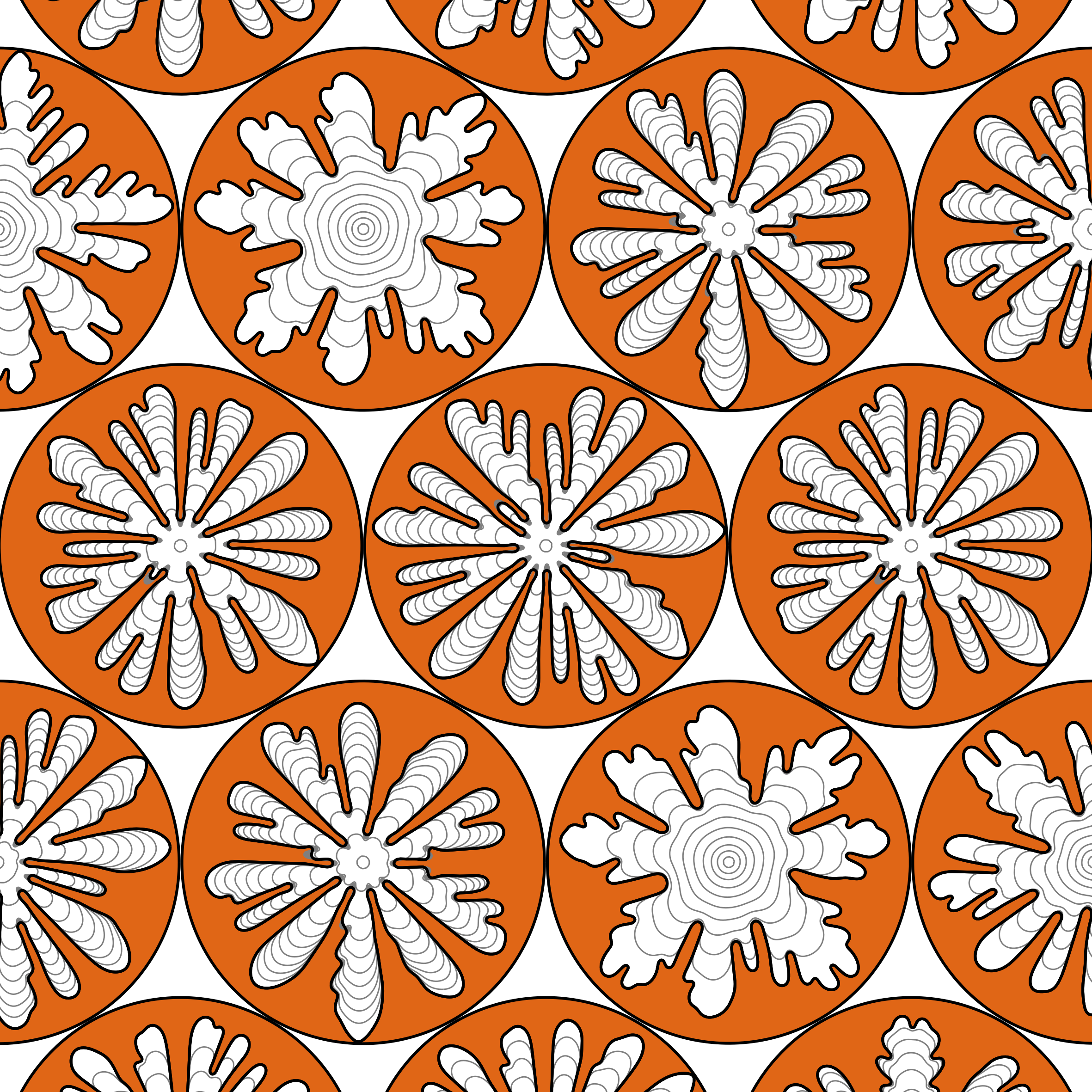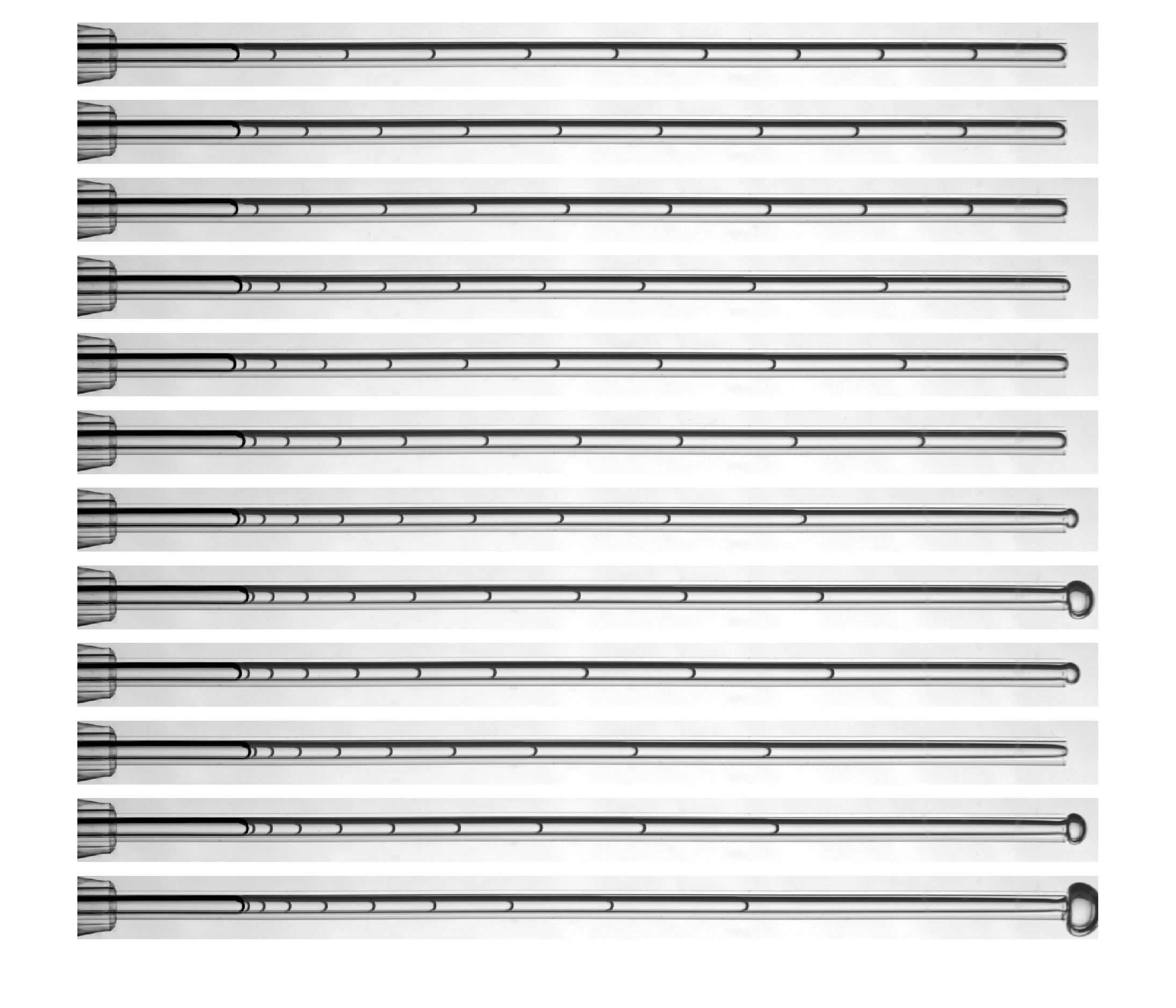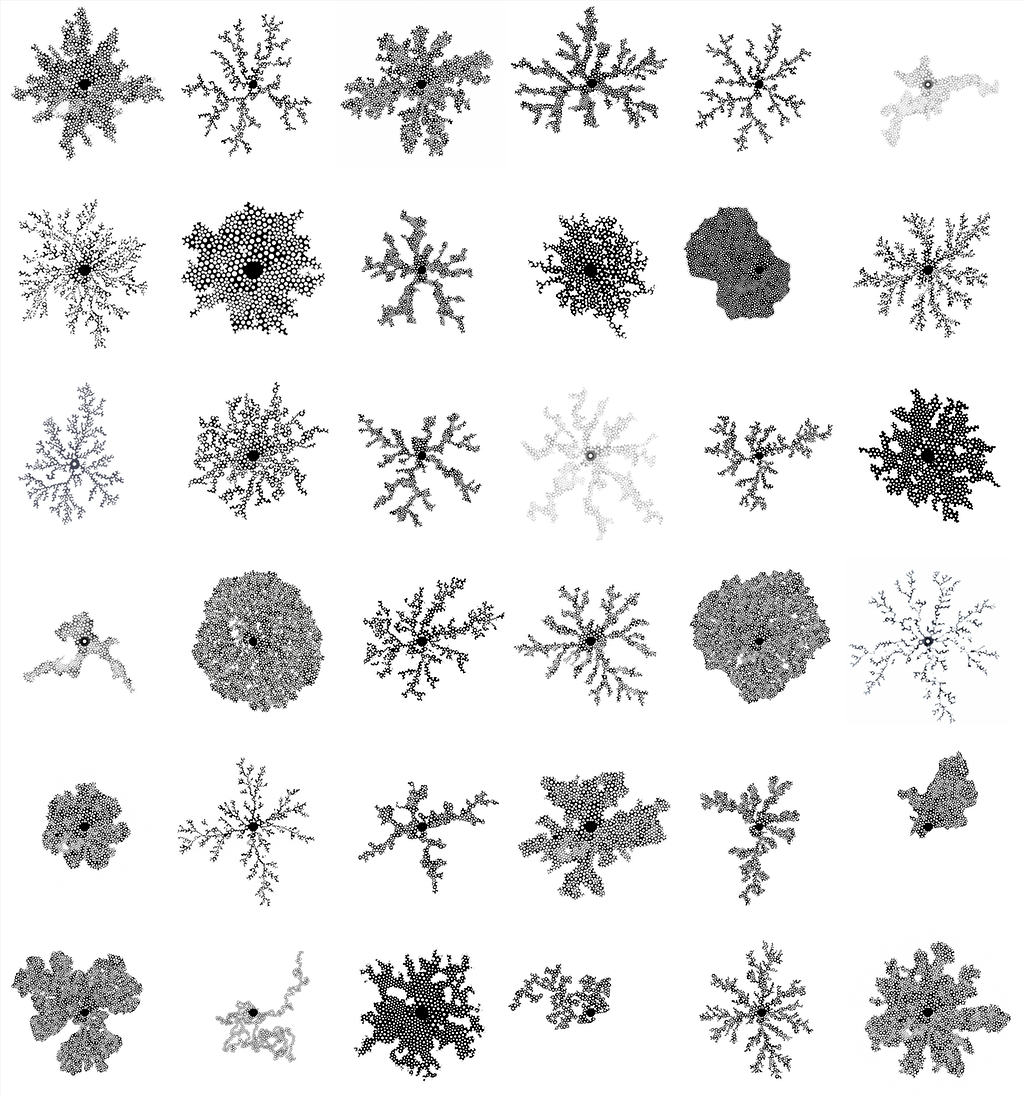Viscous fingering is a classical hydrodynamic instability that occurs when a low-viscosity fluid, such as a gas, is used to drive a much more viscous fluid, such as oil, from a confined geometry. In addition to being a particularly accessible example of spontaneous pattern formation, viscous fingering plays an important role in engineering applications including the underground sequestration of carbon dioxide, the operation of fuel cells, and the remediation of groundwater contamination.
In a pair of studies, we examined common but previously overlooked mechanism that can have a strong impact on these patterns. Specifically, we used a series of careful experiments and state-of-the-art numerical simulations to study the injection of air to displace oil from a thin gap between two parallel plates (i.e., a Hele-Shaw cell). As the air invades the gap, the air-oil interface forms an intricate branching pattern of viscous fingers. This process has been the focus of intense study for decades, but the simple fact that air and other gases are highly compressible was previously ignored. Compression causes the air to behave like a spring, pressurising as it is forced into the flow cell and then depressurising as the oil gradually flows out. We showed that this process of compression and expansion can both delay the onset of viscous fingering and reduce the intensity of the fingering pattern. And even when both fluids are liquids, some amount of compression is difficult to avoid — for example, because of large injection pressures, flexible tubing and other components, or the presence of small gas bubbles. Our pair of studies is the first to quantify the impact of compression on the formation of these classical patterns.
Read the papers:
- Gas compression systematically delays the onset of viscous fingering. LC Morrow, C Cuttle, and CWM. Physical Review Letters, 131:224002, 2023. [ doi:10.1103/PhysRevLett.131.224002 | pdf | data ]
- Compression-driven viscous fingering in a radial Hele-Shaw cell. C Cuttle, LC Morrow, and CWM. Physical Review Fluids, 8:113904, 2023. [ doi:10.1103/PhysRevFluids.8.113904 | pdf | data | Editors' Suggestion ]
Featured in Physics Magazine and Winner of the 2024 Frenkiel Award for Fluid Mechanics









